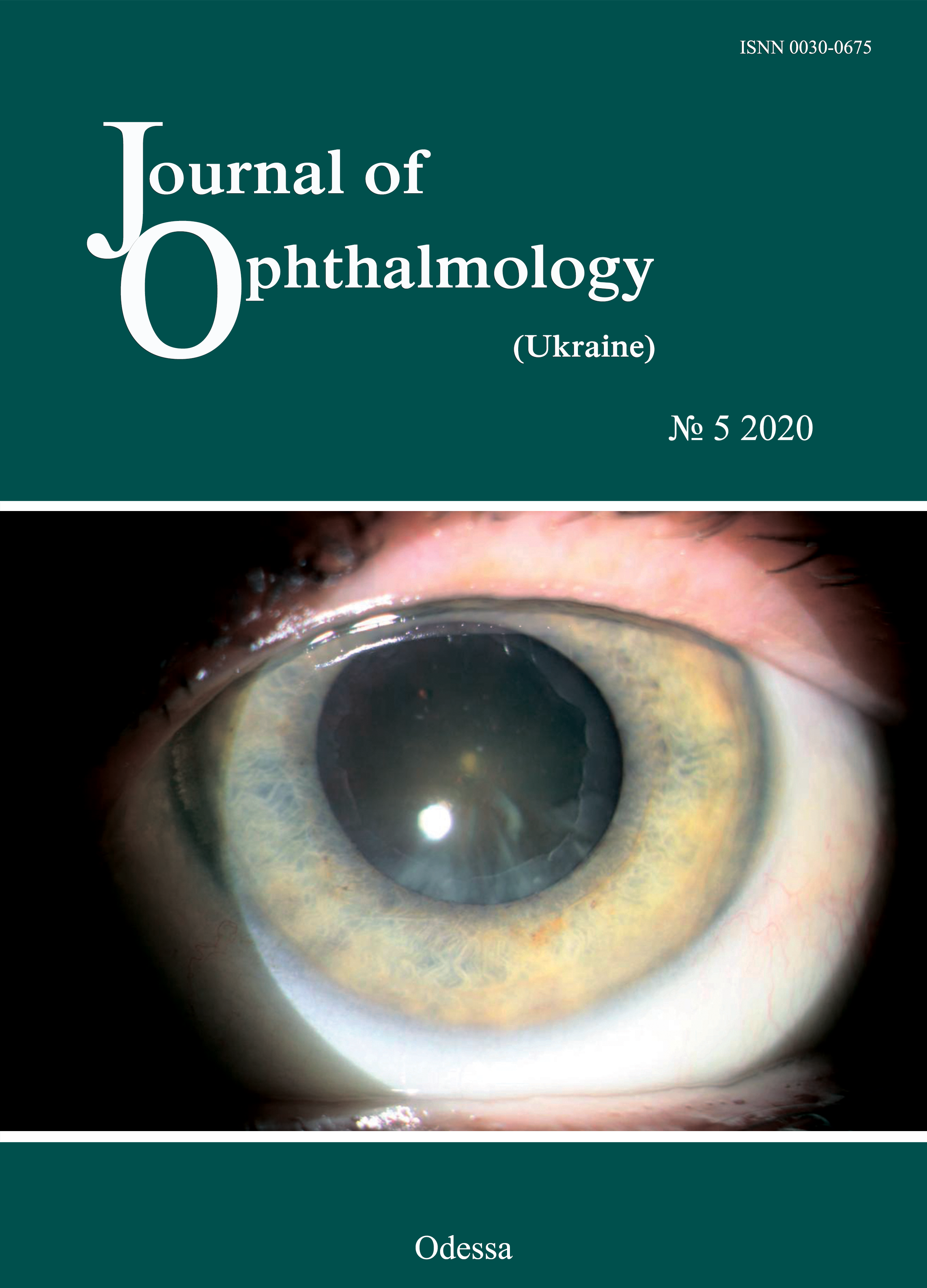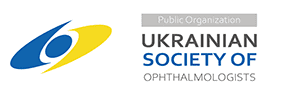Pediatric orbital fractures: clinical and CT features and criteria for selecting a treatment option
DOI:
https://doi.org/10.31288/oftalmolzh202054350Keywords:
orbit reconstruction, pediatric orbital trauma, diplopiaAbstract
Background: Pediatric traumatic orbital injuries have a number of clinical and CT features.
Purpose: To assess the clinical and CT features of pediatric orbital fractures and the influence of these features on the choice among treatment options, and to develop practical recommendations on the basis of the review of long-term treatment outcomes for this type of trauma.
Material and Methods: Medical records and CT scans of 27 pediatric patients with orbital wall fractures were retrospectively reviewed. We reviewed traumatic event circumstances, patient age and gender, type and frequency of clinical symptoms, terms and extent of care provided, and CT findings.
Results: The most common clinical symptom was diplopia (55.5%). Limited eye movement was found in 37%, and enophthalmos, in 44.4% of patients. Trapdoor fractures were found in 51.9% of patients.
Conclusion: The major clinical signs of pediatric orbital wall fractures were diplopia and limited upward eye movement. Trapdoor fracture was the most common type of orbital injury among patients of this study. Because radiography showed no evidence of impairment of orbital wall bones in 22.2% of patients of this study, findings of clinical examination become essential evidence in the diagnosis of pediatric fractures. Time of care provision and active surgical management are important when treating pediatric patients with orbital fractures.
References
1.Kwon JH, Moon JH, Kwon MS, Cho JH. The differences of blowout fracture of the inferior orbital walls between children and adults. Arch Otolaryngol Head Neck Surg. 2005;131(8):723-7. https://doi.org/10.1001/archotol.131.8.723
2.Astapenko OO, Malanchuk VO, Chepurnyi YV, Logvinenko IP. [Peculiarities of the first aid to patients with orbital injuries]. Oftalmol Zh. 2015; 2:32-8. Ukrainian.
3.Chepurnyi Y, Chernogorskyi D, Kopchak A, Petrenko O. Clinical efficacy of peek patient-specific implants in orbital reconstruction. J Oral Biol Craniofac Res. 2020;10(2):49-53.https://doi.org/10.1016/j.jobcr.2020.01.006
4.Dubois L, Steenen SA, Gooris PJ, Bos RR, Becking AG. Controversies in orbital reconstruction-III. Biomaterials for orbital reconstruction: a review with clinical recommendations. Int J Oral Maxillofac Surg. 2016; 45(1):41-50.https://doi.org/10.1016/j.ijom.2015.06.024
5.Soll DB, Poley BJ. Trapdoor variety of blowout fracture of the orbital floor. Am J Ophthalmol. 1965 Aug; 60:269-72.https://doi.org/10.1016/0002-9394(65)90927-X
6.Hink EM, Wei LA, Durairaj VD. Clinical features and treatment of pediatric orbit fractures. Ophthalmic Plast Reconstr Surg. Mar-Apr 2014; 30(2):124-31.https://doi.org/10.1097/IOP.0000000000000026
7.Berger AJ, Kahn D. Growth and development of the orbit. Oral Maxillofac Surg Clin North Am. 2012; 24(4):545-55.https://doi.org/10.1016/j.coms.2012.08.001
8.Abdulkerimov TH, Mandra UV, Gerasimenko VI, Tseh DV, Samatov NR, Mandra EV, et al. [Epidemiology of the orbital wall fractures. Retrospective study]. Problemy stomatologii. 2019; 15(2):46-9. Russian.https://doi.org/10.18481/2077-7566-2019-15-2-46-49
9.Koltai PJ, Amjad I, Meyer D, Feustel PJ. Orbital fractures in children. Arch Otolaryngol Head Neck Surg. 1995;121(12):1375-9.https://doi.org/10.1001/archotol.1995.01890120033006
10.Stotland MA, Do NK. Pediatric orbital fractures. J Craniofac Surg. 2011; 22(4):1230-5.https://doi.org/10.1097/SCS.0b013e31821c0f52
11.Oppenheimer AJ, Monson LA, Buchman SR. Pediatric orbital fractures. Craniomaxillofac Trauma Reconstr. 2013;6(1):9-20.https://doi.org/10.1055/s-0032-1332213
12.Kunz C, Audigé L, Cornelius CP, Buitrago-Téllez CH, Rudderman R, Prein J. The Comprehensive AOCMF Classification System: Orbital Fractures - Level 3 Tutorial. Craniomaxillofac Trauma Reconstr. 2014; 7(Suppl 1): S092-102.https://doi.org/10.1055/s-0034-1389562
Downloads
Published
How to Cite
Issue
Section
License
Copyright (c) 2025 А. С. Слободянюк, Ю. В. Чепурний, В. П. Ефіменко, Ю. В. Шукліна, А. В. Копчак, О. В. Петренко, Л. М. Яковенко, С. О. Риков

This work is licensed under a Creative Commons Attribution 4.0 International License.
This work is licensed under a Creative Commons Attribution 4.0 International (CC BY 4.0) that allows users to read, download, copy, distribute, print, search, or link to the full texts of the articles, or use them for any other lawful purpose, without asking prior permission from the publisher or the author as long as they cite the source.
COPYRIGHT NOTICE
Authors who publish in this journal agree to the following terms:
- Authors hold copyright immediately after publication of their works and retain publishing rights without any restrictions.
- The copyright commencement date complies the publication date of the issue, where the article is included in.
DEPOSIT POLICY
- Authors are permitted and encouraged to post their work online (e.g., in institutional repositories or on their website) during the editorial process, as it can lead to productive exchanges, as well as earlier and greater citation of published work.
- Authors are able to enter into separate, additional contractual arrangements for the non-exclusive distribution of the journal's published version of the work with an acknowledgement of its initial publication in this journal.
- Post-print (post-refereeing manuscript version) and publisher's PDF-version self-archiving is allowed.
- Archiving the pre-print (pre-refereeing manuscript version) not allowed.












